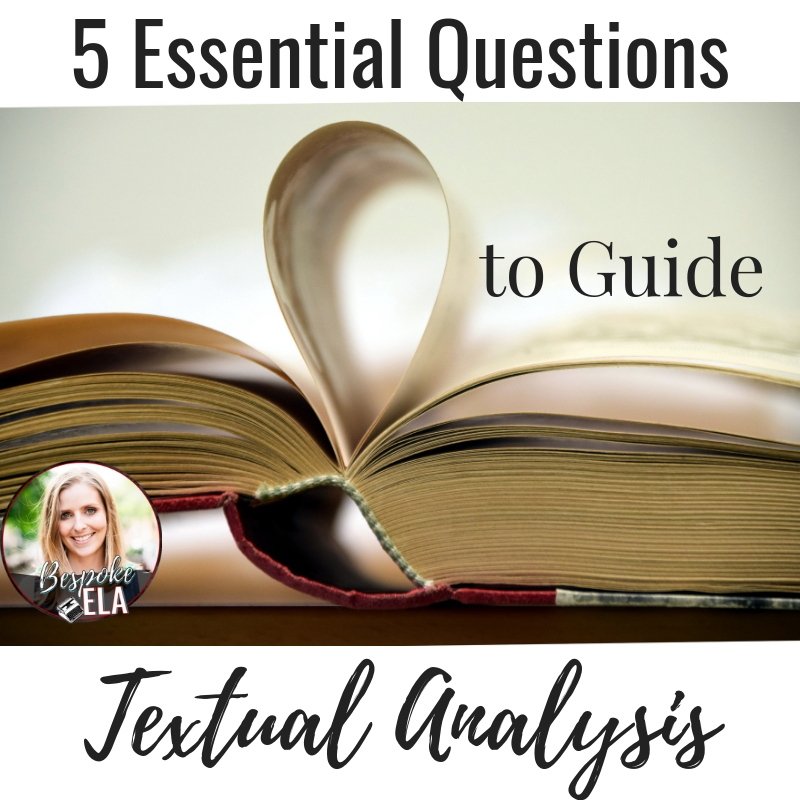Textual analysis can be very confusing when it is anchored or bogged down by esoteric terminology, jargon, and specific devices. This terminology can make textual analysis and close reading and intimidating process for students. Instead of teaching all students specific terms, I like to teach them the four rhetorical relationships. These four rhetorical relationships are broad categories that include the function of all literary and rhetorical devices but simplify analysis so that students only have to use four devices instead of 25+ devices.
The four rhetorical relationships include: juxtaposition, contrast, repetition, and shift. Literary and rhetorical devices can be classified into these four categories. For example, similes and metaphors are types of juxtaposition because they are comparisons of two items. These two devices place items side-by-side for the sake of comparison. Sometimes, those two items might even reveal a contrast. Specific terms that reveal a contrast include oxymorons and paradoxes. So those specific terms can be classified under the rhetorical relationship called contrast. Other devices that we can classify under these rhetorical relationships include parallel structure and anaphora as types of repetition. Essentially, all devices can be classified underneath these four headings.
I like to use this approach in my on-level classes and save the more specific terminology for my Honors and Advanced Placement classes. Of course, this is not a blanket strategy that I use for all classes. It really depends on the needs of my students.
These four rhetorical relationships can be used to guide textual analysis as well. In fact, these four terms (plus one summative question) are all you need to give students to analyze ANY TEXT— fiction, nonfiction, drama, poetry, etc. These questions can even be used to analyze any visual text as well including (but not limited to) movies, commercials, and works of art.
Check out the FIVE ESSENTIAL QUESTIONS TO GUIDE TEXTUAL ANALYSIS below:
#1) What is repeated in the text? What does this repetition emphasize?
#2) What is juxtaposed in the text? What is placed side-by-side for the sake of comparison? What does this comparison emphasize?
#3) Does the text contain a contrast? Where does this contrast occur? What does this contrast emphasize?
#4) Where does the text shift or change? Why does the text shift here or there? How does this shift affect the overall message?
#5) What is the overall message or theme of the text? How is this message developed throughout the text?
Note that literary and rhetorical devices work to emphasize key thematic ideas in a text, so these questions are worded to reflect the role of devices in writing.
Use these five questions to guide analysis of every text from poetry to nonfiction to short stories to drama to novels. Answers to any of the questions with textual evidence provides students with the commentary they need to write analytical essays. Students can actually quite literally take their answers to any one of these questions and expand their responses into paragraphs to create the body of an entire essay. Try out this approach with your next textual analysis unit and see if it helps simplify the process for your students.
Be sure to check out the FREE HANDOUT with the FIVE ESSENTIAL QUESTIONS TO GUIDE TEXTUAL ANALYSIS available in the FREEBIE LIBRARY from Bespoke ELA.
Click on the link to subscribe to Bespoke ELA and receive the password to unlock 100+ freebies to print and use in your classroom!
Meredith is the founder and creator of TeachWriting.org and Bespoke ELA. She has taught high school English for 10+ years in Dallas, Chicago, and New York City and holds a M.A. in Literature from Northwestern University. She has always had a connection to the written word-- through songwriting, screenplay writing, and essay writing-- and she enjoys the process of teaching students how to express their ideas. An avid tea drinker and anglophile, Meredith enjoys life with her husband, daughter, and sweet pups.






